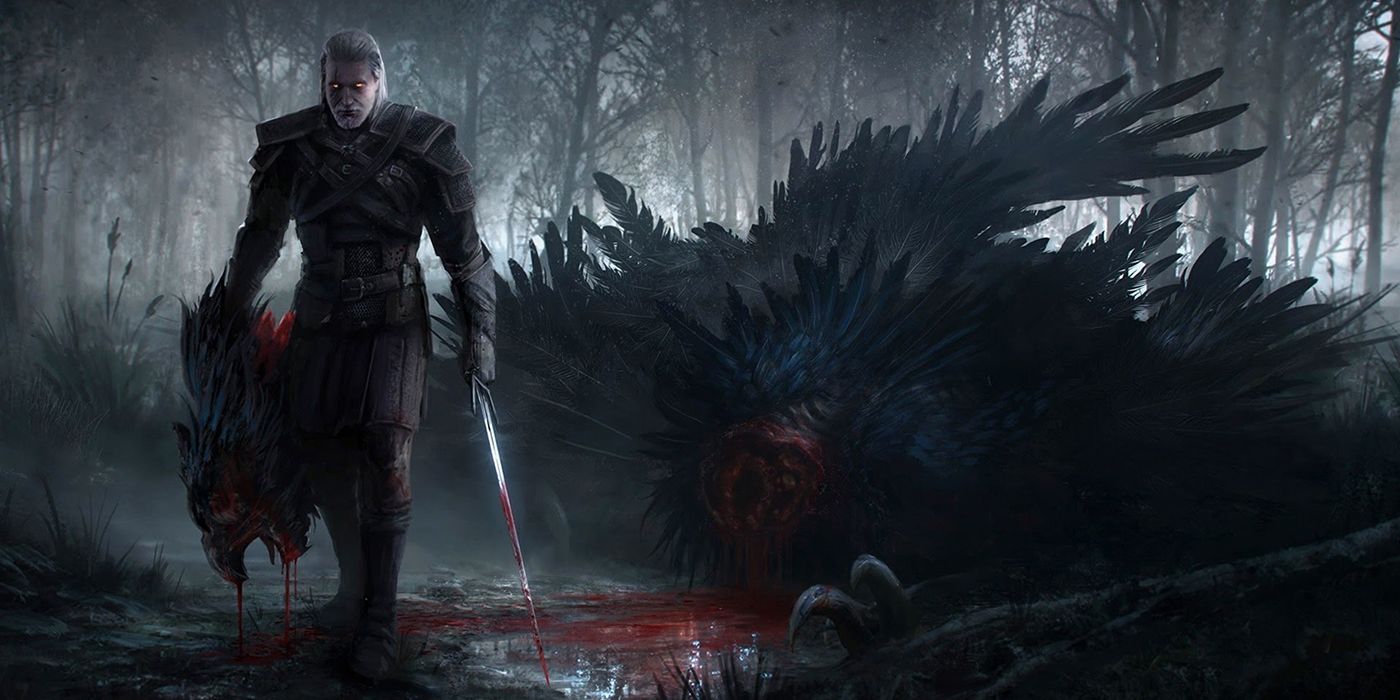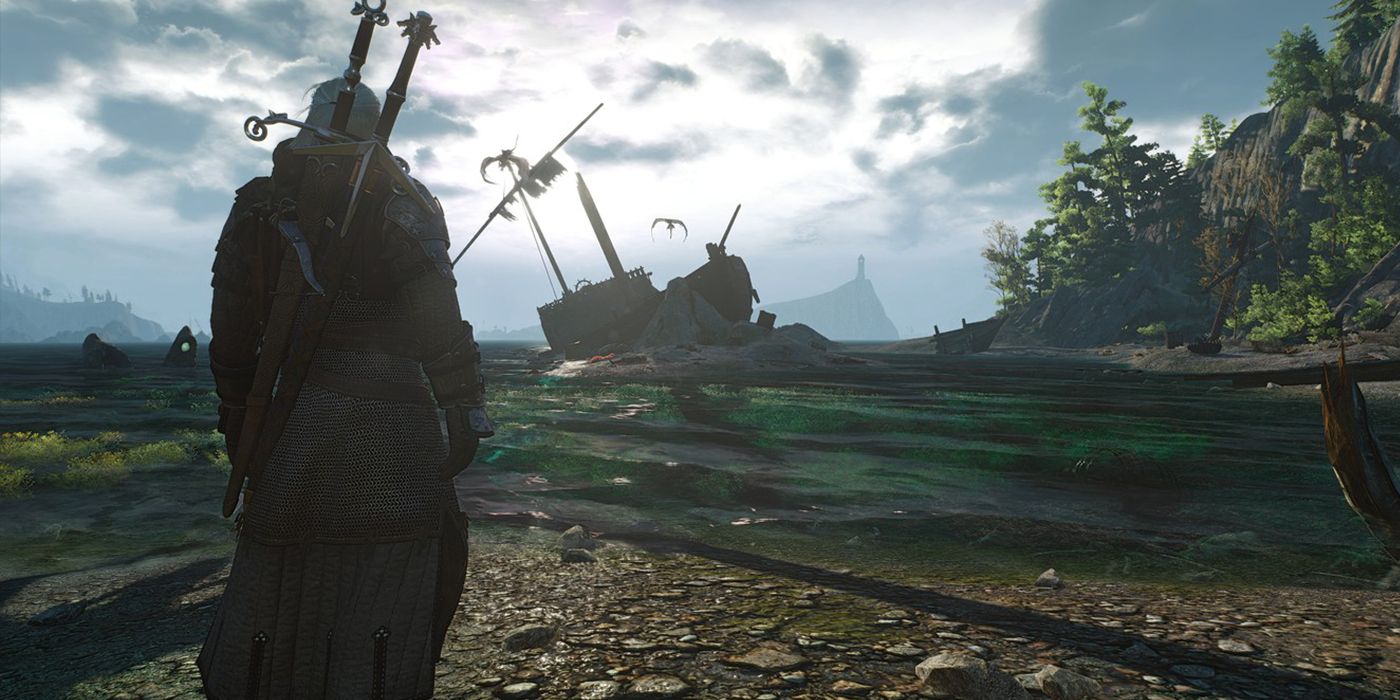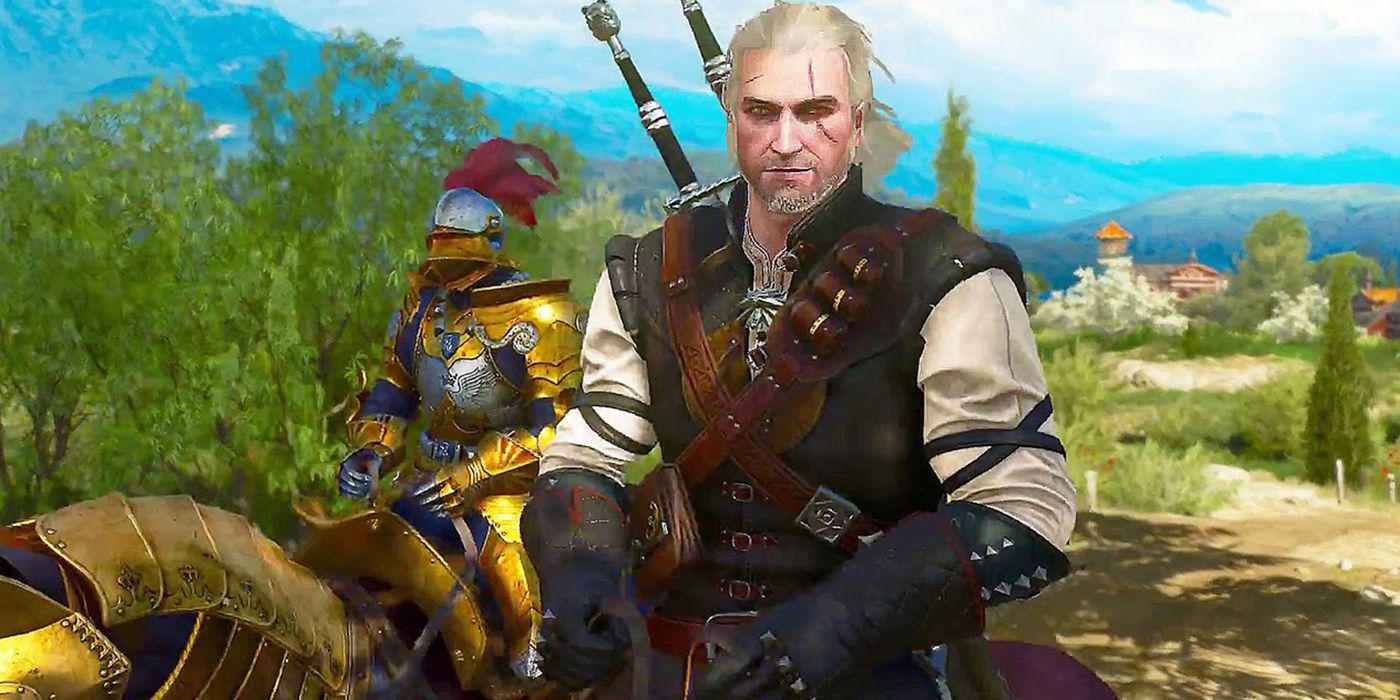While playing The Witcher games, it's made abundantly clear that Geralt's School of the Wolf is not the only witcher school out there on the Continent. Though many of the schools are mentioned in passing, there's actually some fascinating lore available in the more obscure codex entries of the games.
Witcher schools aren't canon to Andrzej Sapkowski's original Witcher books, but they're very much canon in the games--so, at the very least, it'd help those fans who play The Witcher games to know about each of the eight Witcher schools. There's a long, storied, and violent history accompanying the rise and steady decline of the witchers' race, and each faction has its own specializations, techniques, and stylized medallions identifying the school every witcher trained with.
The Order of Witchers
The original Witcher "school" wasn't actually a school at all. Before witchers adopted a more fragmented existence, when the concept of witchers was first put into practice, there was only one faction: the Order of Witchers.
The practice of mutating witchers and training them to kill monsters began in the 10th century, first commissioned by many of the Continent's kings (and their court mages) who were trying to create an order of magic-using knights. The idea behind creating witchers is pretty much the same as it is in the Continent's present-day: to engineer warriors who could take down the legendary monsters that normal soldiers were helpless to stop.
However, the Order failed to impress the rulers who founded it, and so its members dissolved the organization and split off into different groups that would become witcher schools. Naturally, each school had its own techniques and unique methods for killing monsters.
School of the Bear
The School of the Bear is headquartered in an area more populous than most witcher schools: it's located in the Amell Mountains, which divide the Northern Kingdoms and Nilfgaard. While the mountains aren't terribly populated, they're also prime real estate for dwarves and gnomes, and it is said that they have an understanding with the witchers settled there. As would make sense for magically augmented warriors with a reverence for bears, bear school witchers are known for their especially heightened strength and stamina, thus favoring heavy armor over agility.
At the time of The Witcher 3, many witcher schools have more or less met their downfall, and the School of the Bear is no different: due to the distrust of kings and common folk alike, the school is no longer operational.
School of the Cat
For Witcher 3 players who have a problem with the way Geralt is often reviled and treated with suspicion, that's nothing compared to the hatred most people have for witchers from the School of the Cat. That hatred is based on the fact that, sometime in the school's history, witchers of the cat decided not to honor the policy political neutrality adhered to by all other schools. As a result, these witchers are more known for their work as assassins than for killing monsters.
It doesn't help that supposedly, the Cat School further augmented the witcher mutations used to transform students into witchers; the school's changes were said to strengthen the witcher's emotions rather than suppress them, making for an uncommonly volatile and violent variety of witcher. The School of the Cat's reputation was tarnished so much that finally the local kingdoms rallied together and forced them from their fortress, scattering the surviving members.
These witchers are still very much despised in The Witcher 3, since following the destruction of their home base, cat witchers began to sell their services as bloodthirsty mercenaries out of traveling caravans.
School of the Crane
Plenty of people don't even know that a School of the Crane exists since there's not much documentation of it in any of the Witcher games. Witchers from this school have an especially unique signature: they specialize in fighting aquatic and airborne monsters, and their weapons of choice are the sword, and surprisingly, a rudimentary sort of gun. Even more unique for witchers, they generally prefer to ply their trade without armor altogether--unless they're engaging in combat underwater, in which case they'll use a protective suit specially designed for use in water and a rope (basically, the primitive fantasy version of diving gear).
The School of the Crane is supposed to have its setup along the Continent's eastern coast, though little else about it is mentioned in the lore of the Witcher games. And seeing as none of the Witcher schools are canon to the original books, scraps of in-game lore are all that players have to go off of.
School of the Griffin
The School of the Griffin is generally given a similar level of respect as the School of the Wolf--that is to say, they're probably the two most highly-regarded of the Witcher schools. While witchers of the Wolf have their professionalism and impressive track record, witchers of the Bear are known for their emphasis on knightly social etiquette in addition to actual combat training. These witchers utilize Signs, or witcher magic, more so than the other schools in battle, and thus have developed more of a magical specialization. However, the school was more or less obliterated when an avalanche destroyed its home base in Kaer Seren, near Kovir, suspected to be the work of jealous mages; while Griffin School witchers still exist and operate at the time of The Witcher games, the school itself is extinct.
School of the Manticore
Seeing as the School of the Manticore was only introduced in The Witcher 3's last DLC, Blood and Wine, there's even less information about this school than the School of the Crane. According to the game, this school is located near Zerrikania in the Nilfgaardian empire...and that's about it.
Manticore witchers sure have cool-looking armor, though, and given that it augments alchemy use, that could suggest witchers from this school specialize in alchemy the way witchers of the Griffin School specialize in Signs.
School of the Viper
This school is home to one Letho of Gulet, the king-slaying assassin of The Witcher 2. Like the Manticore School, the Viper School is located near Nilfgaard, though these witchers make their home in the Tir Tochair mountains. Viper School witchers are known for their use of stealth and subterfuge in monster hunts, and for the use of dual blades like a viper's fangs. Unfortunately, this school has a troubled history; during the Usurper's reign in Nilfgaard, he tried to recruit the Viper School into Nilfgaard's military forces, and when they naturally refused, he destroyed their keep.
Though forced to disband, the Viper School was eventually given an offer from Emhyr var Emries when he took power: perform several assassinations in service to Nilfgaard and be rewarded with the restoration of the Viper School. Though the witchers agreed, Emhyr didn't keep his word and hunted down the Viper School witchers after they completed his dirty work. Thus, the school is effectively extinct.
School of the Wolf
Finally, there's the school that everyone has probably heard of: the School of the Wolf, home of the great white wolf, Geralt of Rivia. As mentioned above, Wolf School witchers have a relatively stellar reputation of reliability and professionalism as monster-slayers and are more highly-regarded in the world that most other schools. The school makes its home in the fortress of Kaer Morhen, built in the Morhen Valley of Kaedwen.
However, the School of the Wolf didn't escape the trend of destruction that seems to follow all witcher schools on the Continent; two different politically-motivated massacres in the 12th century, one of which involving witchers of the Cat and Wolf Schools pitted against each other, led to the ultimate decline of the school. The school's last students were trained in 1230, and though the school itself was abandoned due to its downfall, a small handful of remaining witchers including Geralt and Vesemir still spend their winters in Kaer Morhen leading all the way up to the events of The Witcher 3.
The Witcher 3 is out now for PC, PS4, Switch, and Xbox One.



